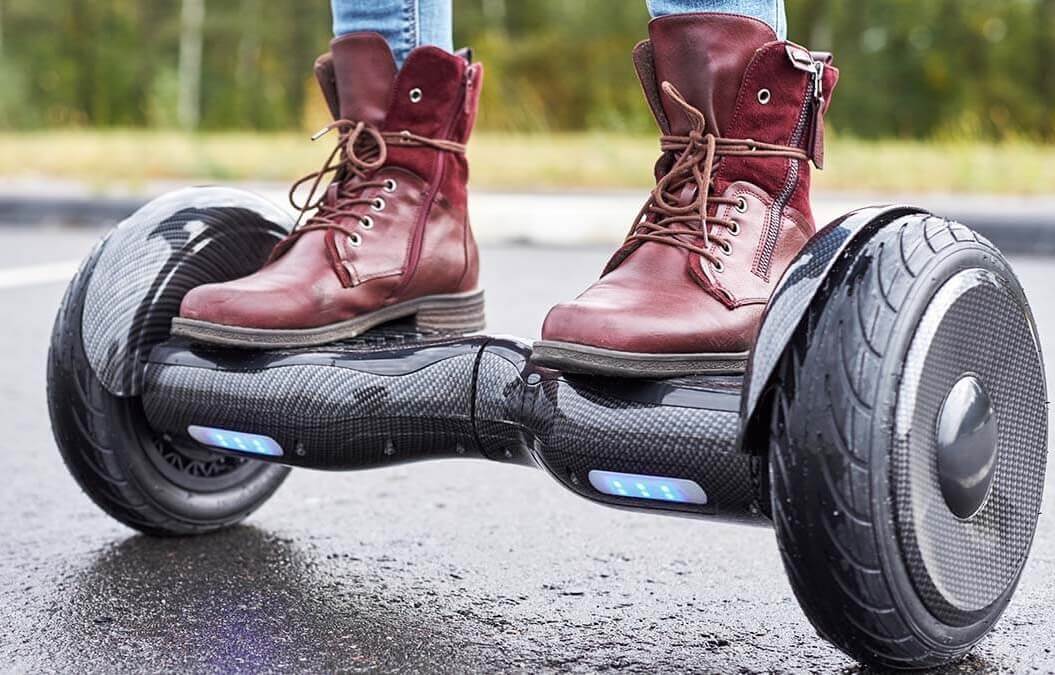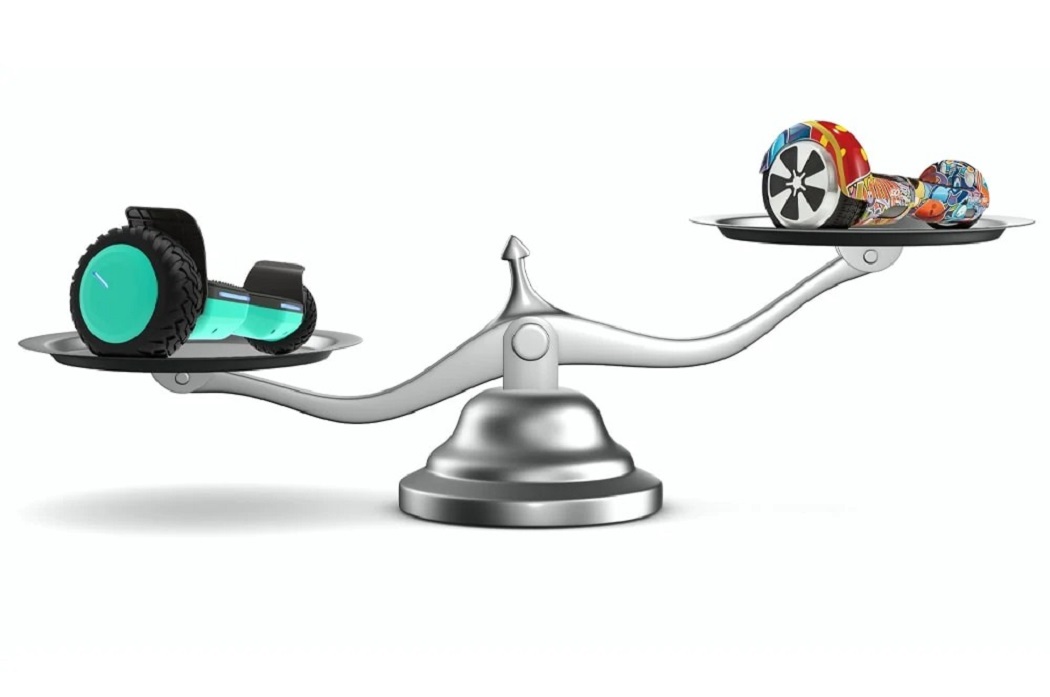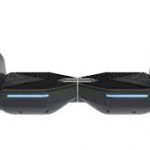Hoverboards have swiftly emerged as a popular means of personal transportation and entertainment. As you consider purchasing one, one crucial aspect to consider is the weight of the hoverboard itself. Hoverboard weight plays a significant role in its portability, maneuverability, and overall user experience. In this article, we will delve into the importance of hoverboard weight, the factors influencing it, and how to find the right balance for your needs.
The Impact of Hoverboard Weight
When it comes to hoverboards, weight is not just a number on a spec sheet. It influences various aspects of the riding experience. A lighter hoverboard is easier to carry, making it more convenient to transport when not in use. Additionally, a lighter board usually offers improved maneuverability, allowing riders to make quick turns and navigate tight spaces with ease. On the flip side, a slightly heavier hoverboard might offer better stability, which can be beneficial for beginners.

Weight Of a Hoverboard: The Affect Factors
| Factors | Battery Capacity | Frame and Construction | Motor Power |
|---|---|---|---|
| Impact on Weight | Higher-capacity batteries tend to be heavier. | Lightweight materials like aluminum alloys can reduce weight. | More powerful motors may require larger components, increasing weight. |
| Performance Benefits | Longer riding range on a single charge. | Provides a balance between durability and weight. | Better acceleration and performance, suitable for speed enthusiasts. |
| Considerations | Suitable for those needing extended rides. | Offers a compromise between weight and durability. | Recommended for riders who prioritize speed and responsiveness. |
This table provides a quick comparison of how battery capacity, frame and construction, and motor power affect hoverboard weight and their corresponding performance benefits and considerations.
Battery Capacity
One of the primary factors impacting the weight of a hoverboard is its battery capacity. High-capacity batteries tend to be heavier. And they contribute significantly to the overall weight of the device. However, they also provide a longer riding range, which can be advantageous for those looking to travel longer distances on a single charge.
The battery capacity of a hoverboard directly influences its weight and riding capabilities. A higher-capacity battery typically translates to a heavier hoverboard due to the additional cells required to store more energy. While this might result in a slightly heavier overall weight, the advantage lies in the extended riding range it offers.
A hoverboard with a larger battery capacity can cover greater distances on a single charge, making it an ideal choice for individuals seeking prolonged adventures or daily commutes without the need for frequent recharging. The trade-off between weight and extended riding range becomes a critical consideration, allowing users to align their choices with their intended usage patterns.

Frame and Construction
The materials used in the frame and construction of a hoverboard play a pivotal role in determining its weight. Boards made from lightweight materials like aluminum alloys are generally lighter but still offer sturdiness and durability. On the other hand, heavier materials like steel might result in a more robust build but at the cost of additional weight.
The frame and construction materials used in a hoverboard play a pivotal role in determining its weight and overall durability. The choice of materials can significantly impact the balance between sturdiness and weight. Hoverboards crafted from lightweight materials such as aluminum alloys are engineered to reduce the overall weight without compromising structural integrity.
These materials offer a blend of portability and strength, making them suitable for riders who prioritize maneuverability and ease of transport. Conversely, opting for a hoverboard with a heavier frame, possibly constructed from materials like steel, can provide added robustness and stability. This choice might be preferred by individuals who are looking for a board that can withstand rough terrains or heavier usage scenarios. Balancing the materials used in the frame and construction helps riders select a hoverboard that aligns with their specific preferences and intended use cases.

Motor Power
The power of the motors installed in a hoverboard impacts its performance and weight. More powerful motors may require larger components, which can contribute to an increase in weight. However, these motors can provide better acceleration and performance, making them suitable for riders who prioritize speed and responsiveness.
The motor power of a hoverboard is a key determinant of its performance and weight. More powerful motors often require larger components and additional power sources, contributing to an increase in the overall weight of the hoverboard. However, the benefits of opting for a hoverboard with higher motor power can be substantial. These motors deliver improved acceleration and responsiveness, allowing riders to enjoy a dynamic and exhilarating experience.
Individuals who seek speed and agility will appreciate the enhanced performance offered by powerful motors, making them well-suited for recreational riding and navigating through various terrains. When considering motor power, riders must weigh the advantages of heightened performance against the potential increase in weight, ensuring that their choice aligns with their desired level of excitement and maneuverability.

Hoverboard Weight: Finding the Balance
When selecting a hoverboard, finding the right balance between weight and performance is crucial. Here are some factors to consider:
- Intended Use: Determine whether you plan to use the hoverboard for short commutes, recreational rides, or tricks and stunts. This will help you prioritize whether you need a lighter board for portability or a slightly heavier one for stability.
- Rider’s Weight: Keep in mind your own weight as well as the weight of potential riders. Heavier riders might prefer a hoverboard with a bit more weight for added stability.
- Battery Life: Consider how far you need to travel on a single charge. If you require a longer riding range, you might need to accept a slightly heavier hoverboard with a larger battery.

Conclusion
Hoverboard weight is a crucial consideration when choosing the right board for your needs. The weight affects portability, maneuverability, and overall performance. By understanding the factors that contribute to hoverboard weight, you can make an informed decision that aligns with your preferences and usage scenarios. Whether you opt for a lightweight board for easy transportation or a slightly heavier one for enhanced stability, striking the right balance will ensure an enjoyable riding experience.
Read more about “What is The Weight Limit For a Hoverboard” in our next article.
FAQ
Q: How much does a typical hoverboard weigh?
A: The weight of a hoverboard can vary depending on factors like battery capacity, frame materials, and motor power. On average, most hoverboards weigh between 20 to 30 pounds (9 to 13.6 kilograms).
Q: Are lightweight hoverboards less durable?
A: Not necessarily. Advances in materials and engineering have allowed manufacturers to create lightweight hoverboards that are still durable and sturdy. Hoverboards made from lightweight yet strong materials like aluminum alloys offer a good balance between weight and durability.
Q: Is a heavier hoverboard more stable?
A: Heavier hoverboards might provide slightly better stability due to their increased weight. However, the stability of a hoverboard is influenced by multiple factors, including wheel size, construction, and rider technique.
Q: How does battery capacity affect hoverboard weight?
A: Higher-capacity batteries typically result in a heavier hoverboard. The need for additional cells to store more energy contributes to the increased weight. However, a larger battery capacity also translates to a longer riding range on a single charge.
Q: Can a lightweight hoverboard support heavier riders?
A: Yes, many lightweight hoverboards are designed to support various rider weights. Manufacturers specify weight limits for each model, and it’s essential to check these limits to ensure the hoverboard is suitable for your weight.
Q: Are there hoverboards specifically designed for portability?
A: Yes, some hoverboard models are designed with portability in mind. These models often feature lightweight materials, compact designs, and carrying handles to make transportation easier.
Q: Do powerful motors significantly increase hoverboard weight?
A: Yes, more powerful motors can contribute to increased hoverboard weight. The need for larger components and additional power sources to support higher motor power can result in a heavier overall device.
Q: How can I choose the right hoverboard weight for my needs?
A: Consider factors such as your intended use (commuting, recreational riding, tricks), your own weight, and the terrain you’ll be riding on. If portability is essential, opt for a lighter hoverboard. If stability and performance are priorities, a slightly heavier board might be suitable.
Q: Can I customize the weight of a hoverboard after purchase?
A: The weight of a hoverboard is primarily determined by its components and design, which are fixed after manufacture. It’s not possible to significantly alter the weight without compromising safety and performance.
Q: Are there any advantages to a slightly heavier hoverboard?
A: Slightly heavier hoverboards can offer enhanced stability and might be preferable for beginners or those who prioritize a smoother ride. They can also accommodate riders who value durability over extreme portability.










